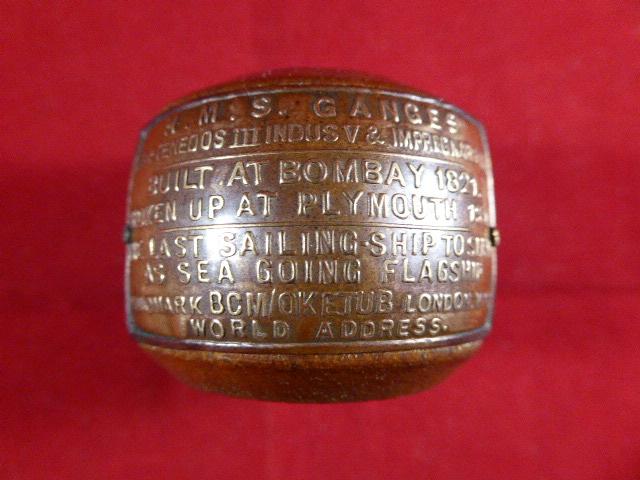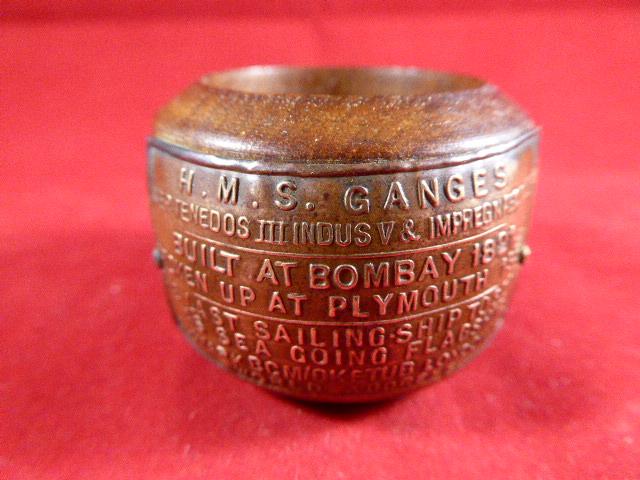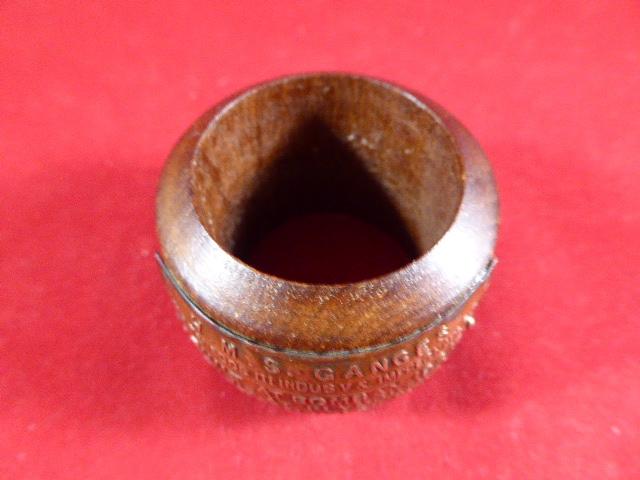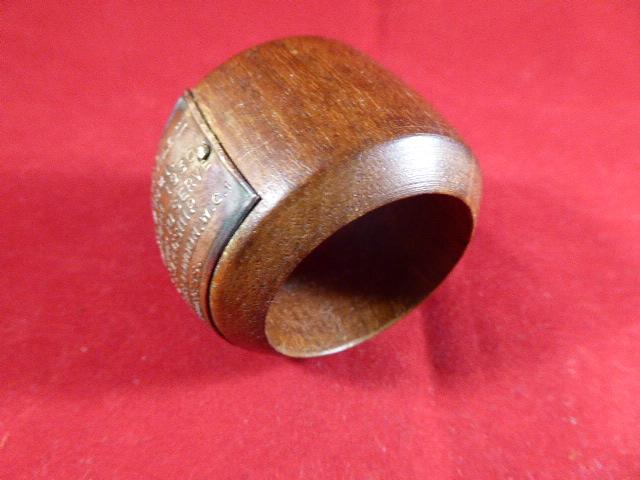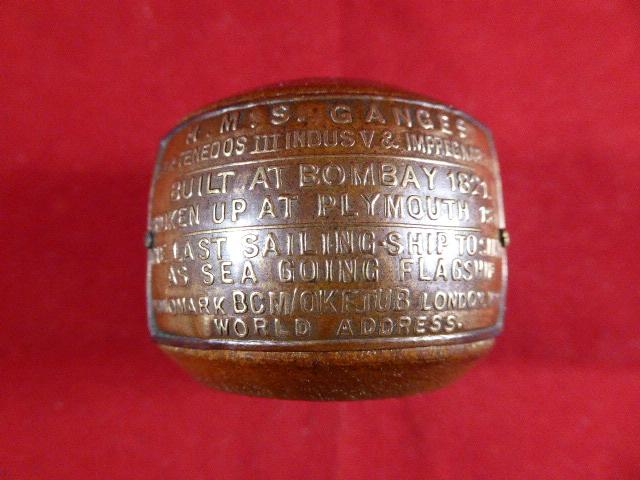Napkin Ring made from the Teak Wood of H.M.S. GANGES c1930
Here on offer is a genuine piece of teak wood from H.M.S. GANGES that has been made into a napkin ring.
It has a quality brass plaque pinned to the front, which reads:
H.M.S. GANGES
LATER TENDOS III INDUS V & IMPREGNABLE III
BUILT AT BOMBAY 1821
BROKEN UP AT PLYMOUTH 1930
THE LAST SAILING SHIP TO SERVE
AS SEA GOING FLAGSHIP
MONOMARK BCM/OKETUB LONDON.W.C.1
WORLD ADDRESS
Some history relating to this great ship follows:
H.M.S. GANGES
H.M.S. Ganges was a 2nd rate line-of-battle ship of 2,284 tons, rated at 84 guns but pierced for 92, with a ships company of 800. Built of teak at the Bombay Dockyard under master shipbuilder Jamsetjee Bomanjee Wadia.
She was commissioned at Portsmouth in 1823, and served in several locations over the following decades.
Notable events included a period as flagship of the South America Station for three years, during which she landed Royal Marines in Rio de Janeiro after a mutiny by Brazilian soldiers.
She also saw action in the Mediterranean in 1838—40, bombarding Beirut and blockading Alexandria.
From 1857–61, she was the flagship of the Pacific Station, based at Valparaiso, Chile. She spent considerable time addressing the San Juan Boundary Dispute from the Esquimalt Royal Navy Dockyard at the Colony of Vancouver Island after which she returned to England to be converted into a training ship; she began service as the training ship HMS Ganges in 1865 at Mylor Harbour, near Falmouth; in 1899, she was moved to Harwich.
In 1905, she became part of RNTE Shotley, which also included the ships HMS Caroline and HMS Boscawen III.
In 1906, she was renamed Tenedos III, then moved to Devonport to become part of the training establishment HMS Indus; on 13 August, 1910, she was renamed Indus V. In October 1922, she was renamed Impregnable III and transferred to the training establishment HMS Impregnable, also at Devonport. In 1923, she was finally taken out of service and transferred to the dockyard, and in 1929 she was sold for breaking up. In 1930, after over a century in service, she was finally broken up at Plymouth. The captain's cabin in the stern was used in the construction of the art-deco hotel on Burgh Island in Devon, where it still remains to this day.
The napkin ring is in excellent condition, no cracks or splits.
The napkin ring measures 1.75” (4.4cm) diameter at its widest point by 1.3” (3.4cm) high.
It weighs 20g.
A great piece of British Naval memorabilia!
Please see my pictures for the details of the condition, which complement this description.
Please see my TERMS OF BUSINESS regarding Deliver Charges and Insurance regarding additional insurance cover, should you require it, BEFORE the item is dispatched.
The responsibility lies with the customer to check with your Customs restrictions that this item can be imported into your country.
Code: 50699
35.00 GBP

